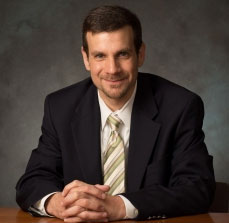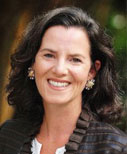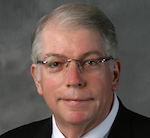Dennis Di Lorenzo, dean of the New York University School of Continuing and Professional Studies, has announced a major shift in the focus of the M.S. in PR and Corporate Communications, a program that has become the biggest of its kind in the world.
Founded in 2005, it currently enrolls about 370 students who pay tuition of $65,000 for the two-year course. He noted there is a “growing trend in graduate education nationwide” for applicants to be younger and the NYU program "will keep abreast of these shifting demographics.”
 |
PR offers a “plethora of multifaceted career options,” he said, spurred by the rise of social media and the “permeation of technology into every facet of communication.”
There will be increased emphasis on helping students from other countries to be able to cope with conditions at an American university. A large proportion of the students is now from outside the U.S.
NYU had announced a new name for its graduate program, calling it Strategic Communication, Marketing and Media Management, which includes the M.S. in PR and corporate communications.
Paula Payton was named director of Strategic Communication, Marketing and Media Management programs in the School of Continuing and Professional Studies.
Teachers Were Informed March 14
Di Lorenzo informed the adjunct and fulltime faculty of the new directions in the PR/CC sequence at a meeting March 14. He said the majority of the faculty voiced their support of the changes, seeing them as “progressive and necessary to meet the needs of our students now and in the future.”
A “select few” have disagreed with the new directions and have left the program of their own free will and we wish them well,” he said. Among those departing is adjunct Lou Capozzi who said he will stay to the end of the semester and in the fall will join the master’s program taught by Michael Goodwin at Baruch College.
Di Lorenzo’s statement is as follows:
 The NYU School of Continuing and Professional Studies M.S. in Public Relations and Corporate Communication program was developed to prepare individuals, at a variety of stages in their careers, with a comprehensive grounding in this continuously evolving industry. Following a growing trend in graduate education nationwide, applicants to the program in recent years have become younger, and it is our responsibility to keep abreast of these shifting demographics to ensure that we are meeting the demands of the industry.
The NYU School of Continuing and Professional Studies M.S. in Public Relations and Corporate Communication program was developed to prepare individuals, at a variety of stages in their careers, with a comprehensive grounding in this continuously evolving industry. Following a growing trend in graduate education nationwide, applicants to the program in recent years have become younger, and it is our responsibility to keep abreast of these shifting demographics to ensure that we are meeting the demands of the industry.
However, this does not mean in any way that the caliber of the students in the program has declined or that their potential for achievement has lessened. Quite the contrary, we find that we are recruiting a more vibrant, determined, and focused group of students than ever before.
The rigor of our admissions process maintains both the level of selectivity and academic excellence for which the program, the School, and the University are known.
Due to the rise of social media, the permeation of technology into every facet of communication, and the need for a global worldview, public relations has become an industry that requires the ability for individuals from all backgrounds and walks of life to communicate and to cooperate with each other in order to be productive.
 |
The PRCC program reflects the rise in diversity in this industry and fosters a sense of global community that is necessary for a successful career in public relations or any type of communication. The classroom experience is enriched by the presence of students and faculty members from across the country and around the world, who provide the diversity of perspectives needed for successful communication on a global scale.
At a meeting convened on Friday, March 14, I invited a group of adjunct faculty members in the PRCC program to engage in an open dialogue about the changing face of public relations and the ways in which NYU-SCPS and the PRCC program are evolving to meet the growing demand for professionals who must be prepared to interact in today’s technology driven global business environment and that of the future.
We discussed additional support services to help our international students acclimate to the transition of studying in an American university, not only in the public relations program, but across the School as a whole. We talked about the need to support the younger demographic of incoming students who see public relations as an exciting field that offers a plethora of multifaceted career options.
Based upon the School’s mission of access and opportunity, it is our job and our duty as educators to ensure that all students are given the chance to apply to the PRCC program, and that if they meet the School’s stringent admissions criteria, to be admitted.
The majority of the adjunct and fulltime faculty members in the PRCC program have voiced their support for the changes being implemented in the program. They see them as progressive and necessary to meet the needs of our students now and in the future.
Those select few individuals who have disagreed with this philosophy have left the program of their own free will, and we wish them well. As we move forward, I am dedicated to building and growing a public relations program that continues to focus on inclusion and cooperation–one that truly embraces public relations as the global form of communication that it has become, and one that continues to cultivate the sense of professional respect and academic excellence that our students have come to know and deserve.


 SapientRazorfish's John Casey launches course to teach college undergrads the principals of digital business transformation.
SapientRazorfish's John Casey launches course to teach college undergrads the principals of digital business transformation. Patrick Ford, worldwide vice chair and chief client officer, Burson-Marsteller, is taking a leave to teach at the University of Florida College of Journalism and Communications in 2017-18. He will be part-time with B-M as senior advisor.
Patrick Ford, worldwide vice chair and chief client officer, Burson-Marsteller, is taking a leave to teach at the University of Florida College of Journalism and Communications in 2017-18. He will be part-time with B-M as senior advisor. The Agency at the University of Florida, staffed by students and run by faculty, has launched a new website profiling graduating seniors.
The Agency at the University of Florida, staffed by students and run by faculty, has launched a new website profiling graduating seniors. Patrick Gibbons, who leads communications for the Johns Hopkins University Applied Physics Laboratory, is slated to move to the University of Notre Dame as executive director of academic communications next month.
Patrick Gibbons, who leads communications for the Johns Hopkins University Applied Physics Laboratory, is slated to move to the University of Notre Dame as executive director of academic communications next month. The Agency, a communication firm affiliated with the University of Florida College of Journalism and Communications staffed by students, visited 15 New York PR and advertising agencies earlier this month. (1 reader comment)
The Agency, a communication firm affiliated with the University of Florida College of Journalism and Communications staffed by students, visited 15 New York PR and advertising agencies earlier this month. (1 reader comment)


 Have a comment? Send it to
Have a comment? Send it to 
No comments have been submitted for this story yet.